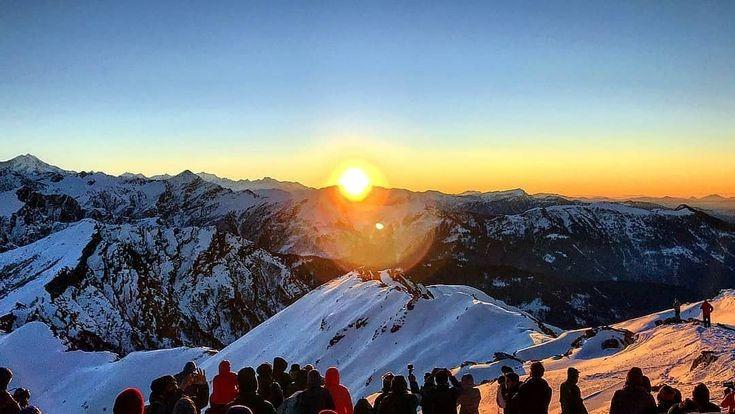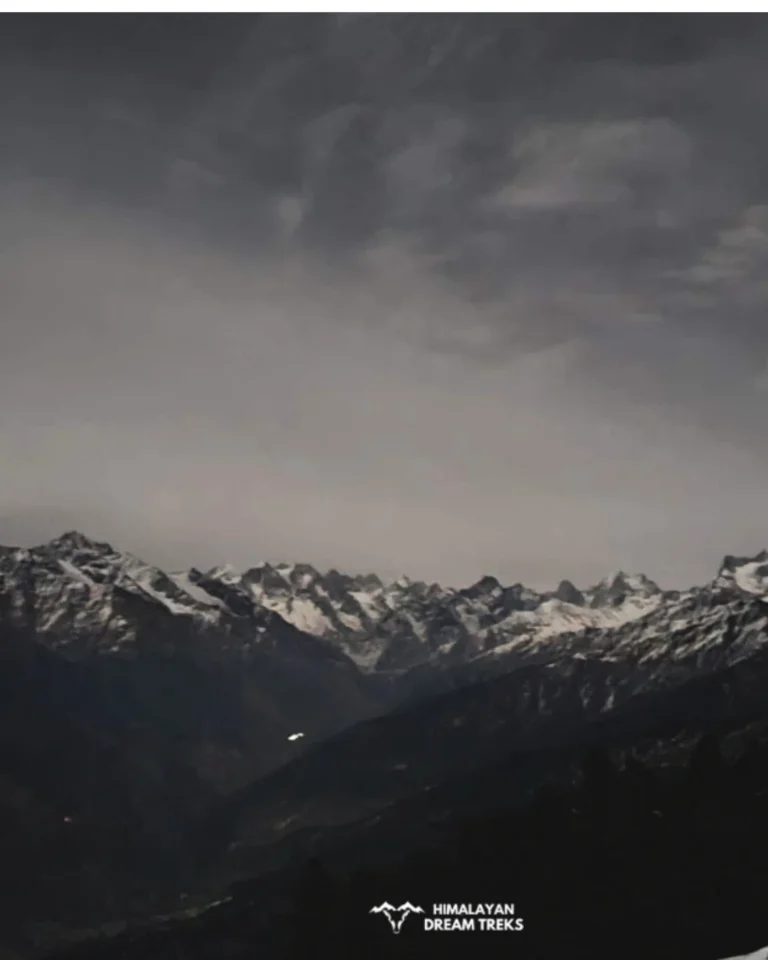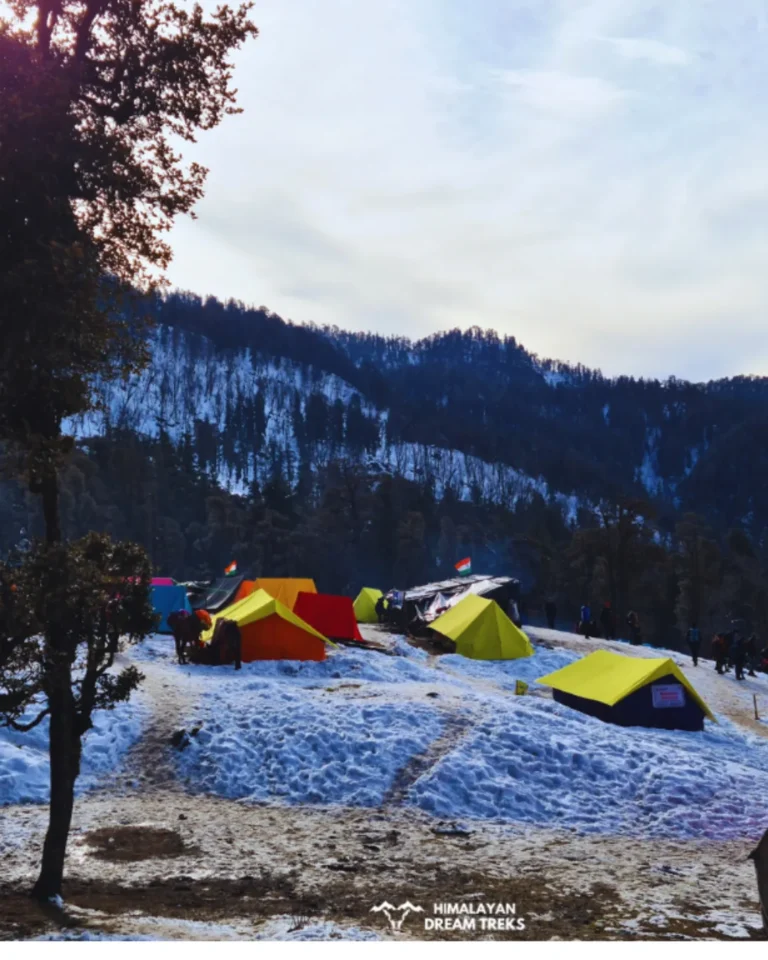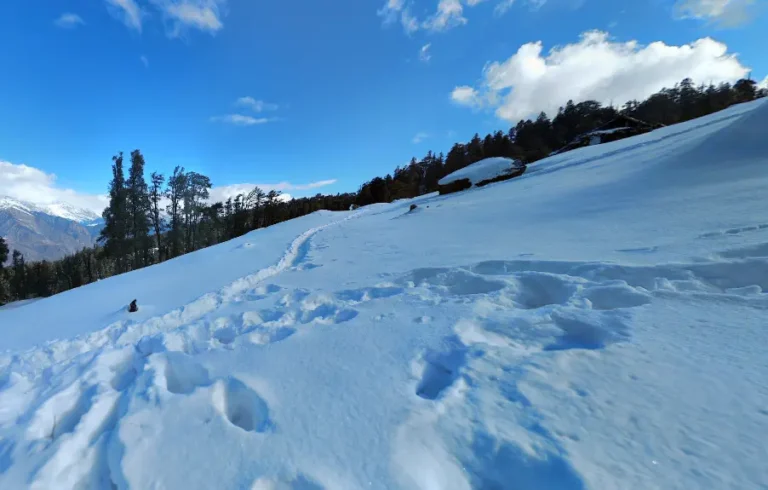Notifications

The Kedarkantha trek, nestled in the stunning Garhwal Himalayas of Uttarakhand, India, has earned its reputation as one of the best winter treks for beginners and experienced trekkers alike. With its snow-clad peaks, picturesque villages, and mesmerizing forests, this trek is not only a thrilling adventure but also an immersive cultural experience. Whether you're a first-time trekker or a seasoned mountaineer, Kedarkantha offers a unique blend of challenges, rewards, and natural beauty that make it one of the top Himalayan dream treks.

The allure of the Kedarkantha trek lies in its accessibility. Located at an altitude of 12,500 feet, it is an ideal introduction to Himalayan trekking. Unlike many of its more challenging counterparts, the Kedarkantha trek is manageable for beginners, offering a moderate level of difficulty. The summit climb, although steep in some sections, is within reach for those who are reasonably fit and committed.
The trek starts from the quaint Sankri village, situated in the Mori Tehsil of Uttarkashi district, and winds through dense forests, scenic meadows, and charming villages. The terrain is a mix of gentle slopes and steeper ascents, giving trekkers an opportunity to enjoy the thrill of summiting without feeling overwhelmed. As you ascend, the spectacular snow-covered landscapes of the Garhwal region slowly unfold, providing an ever-changing backdrop to your journey.
The journey to Kedarkantha begins long before you reach the base camp. The drive from Dehradun to Sankri is an adventure in itself, passing through the scenic towns of Mussoorie and Purola. The 200-kilometer stretch offers breathtaking views of the mountains, rivers, and valleys that define the region. The roads cut through dense pine forests, and the drive along the Mori Valley beside the River Tons is particularly mesmerizing. This scenic journey sets the tone for the adventure ahead, getting trekkers excited for the challenges and rewards of the trail.

Kedarkantha is famous for its well-maintained and relatively simple trail, which makes it an excellent choice for beginners. However, the final push to the summit remains a challenge that promises a sense of accomplishment. Starting from Sankri, the trek passes through the serene Juda Ka Talab, a frozen lake surrounded by snow-covered pine trees, before heading to the Kedarkantha base camp. Along the way, trekkers can enjoy sweeping views of the surrounding peaks, including Mt. Swargarohini, Black Peak, and Bandarpoonch, which will accompany them all the way to the top.

The final stretch of the trek from the base camp to the summit is steep but rewarding. The climb up Bhoja Dhadi offers some of the best views of the entire trek, with trekkers treated to panoramic views of the upper Himalayas. As you approach the summit, the anticipation builds, and the sight of the majestic Kedarkantha peak towering above makes every step worth it. Once at the summit, trekkers are rewarded with 360-degree views of some of the most iconic peaks in the region, including Mt. Swargarohini, Mt. Bandarpoonch, Mt. Kalanag, and the Gangotri massif.
What sets the Kedarkantha trek apart from others is the opportunity to experience the rich culture and lifestyle of the local people. The trek passes through several remote villages, including the village of Kotgaon, which offers a unique cultural immersion. In Kotgaon, trekkers can witness the traditional architecture, local customs, and the simplicity of life in the Garhwal region. Villagers here have lived for centuries amidst the majestic mountains, and many still follow ancient traditions passed down through generations.
Moreover, the trek has deep spiritual significance. Locals believe that the Kedarkantha peak was once the site of the original Kedarnath Temple, and the area remains an important pilgrimage site for the local community. At the summit, trekkers will find a small shrine dedicated to Lord Shiva, further enriching the spiritual experience of the trek. The serene atmosphere, coupled with the mythological importance of the area, makes Kedarkantha a spiritually uplifting experience as much as it is a physical challenge.
The Kedarkantha trek is a haven for nature lovers and wildlife enthusiasts. As you ascend through the dense deodar, rhododendron, and pine forests, you’ll encounter a rich variety of flora and fauna. The forests are home to various species of birds, including the Himalayan Woodpecker, Himalayan Monal, and the state bird of Uttarakhand, the Himalayan Partridge. Lucky trekkers may also spot elusive mammals such as the Musk Deer, Himalayan Black Bear, and the Himalayan Tahr.
The forests of Kedarkantha, especially the stretch from Kotgaon to the summit, are among the most untouched and wild in the region. The play of sunlight filtering through the snow-covered trees creates a magical atmosphere, making every moment spent in these forests a deeply immersive experience.
While Kedarkantha can be trekked year-round, it is at its most enchanting during the winter months, from December to March. During this period, the entire trail is blanketed in fresh snow, transforming the landscape into a winter wonderland. The snow-covered meadows, frozen lakes, and snow-capped trees create a stunning visual spectacle that is a photographer’s dream.
The temperature during winter can dip as low as -10°C at night, making proper gear essential for the trek. However, despite the cold, the snow-covered landscape and the challenge of trekking through the snow make this time of year particularly special. The pristine beauty of the region, combined with the serenity of the snow-covered mountains, creates a unique atmosphere that makes Kedarkantha one of the top winter treks in India.
What makes Kedarkantha even more appealing is the variety of routes available to reach the summit. Each route offers a different experience, allowing trekkers to choose their path based on personal preferences, weather conditions, and the time available. The most popular route starts at Sankri, passing through Juda Ka Talab and the base camp before reaching the summit. However, there are alternative routes that offer a more secluded experience, such as the trail from Gaichwan Gaon, which is longer and less frequented but equally beautiful.
This flexibility in route options adds a layer of customization to the trek, allowing trekkers to tailor their experience based on their interests and fitness levels.
The sunrise from the summit of Kedarkantha is a highlight that trekkers will never forget. As the first rays of sunlight bathe the snow-covered peaks in a golden glow, the entire landscape comes alive in a breathtaking display of color. The sight of the surrounding peaks, including Mt. Swargarohini and Mt. Bandarpoonch, bathed in the soft light of dawn, is a moment that leaves trekkers in awe. For many, this sunrise is the most magical part of the trek and serves as a reminder of the grandeur of the Himalayas.
The best time to undertake the Kedarkantha trek is during the winter months, from December to March, when the trail is covered in snow, creating a truly magical atmosphere. However, the trek is accessible year-round, except during the monsoon season (June to September) when the risk of landslides and slippery trails is high. Spring (April and May) also offers an excellent opportunity to experience the trek, as the snow begins to melt and the forests come alive with blooming rhododendrons and other alpine flowers.
Conclusion:
The Kedarkantha Trek offers an unforgettable Himalayan experience, blending adventure, stunning landscapes, and cultural immersion. Ideal for beginners and seasoned trekkers alike, it combines a challenging summit climb with awe-inspiring views of the surrounding mountain ranges. The trek's picturesque campsites, pristine forests, and the warmth of the local culture create a well-rounded and enriching journey. Whether you're seeking a thrilling adventure or simply want to connect with nature, Kedarkantha provides the perfect opportunity to do so. Embark on this journey and experience the magic of the Himalayas first hand—it’s a trek you'll never forget.

